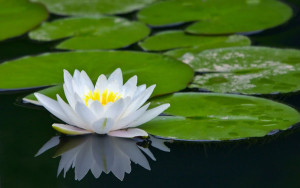 I love Thich Nhat Hanh’s perspective that mindfulness is an art of living. As a therapist, mindfulness has been a concept that I saw text book value in. As a human, dealing with very human problems, mindfulness has become a practice that helps me manage my life with more grace and steadiness than I was ever capable of before.
I love Thich Nhat Hanh’s perspective that mindfulness is an art of living. As a therapist, mindfulness has been a concept that I saw text book value in. As a human, dealing with very human problems, mindfulness has become a practice that helps me manage my life with more grace and steadiness than I was ever capable of before.
What brought me to mindfulness practice was personal loss. I knew that it was “sink or swim” and that if I wanted to navigate this trial, I needed more tools. Mindfulness was a natural rock for me to lean on because of its simplicity and effectiveness.
The tool I rely on most consistently is the practice of paying attention. I have learned to recognize how I’m feeling, make space for the emotions, and befriend them. This means I notice how I feel when I use poor language, speak in certain ways about others, consume media, consume goods, eat certain foods, etc. If I feel good (peaceful, calm, happy) when I’m engaged in a behavior, I relax. If I feel upset (anxious, tense, sad), I try to look at what choices I’m making and consciously try to make another decision. In my life that has looked like talking less, listening more, cutting out foods that have more addictive qualities, and slowing down.
I try not to judge myself when insecurities or reactions surface. Instead, I tend to them, much like I would tend to a crying baby. I look inward and ask what is it that I’m needing or how can I have compassion for my experience. I am usually brought to a more open, loving, and tender place that way.
Mindfulness has taught me how to give myself all the nurturing I need. It starts with two words, “Pay attention.” The journey after that is what allows this human experience to become a work of art.


